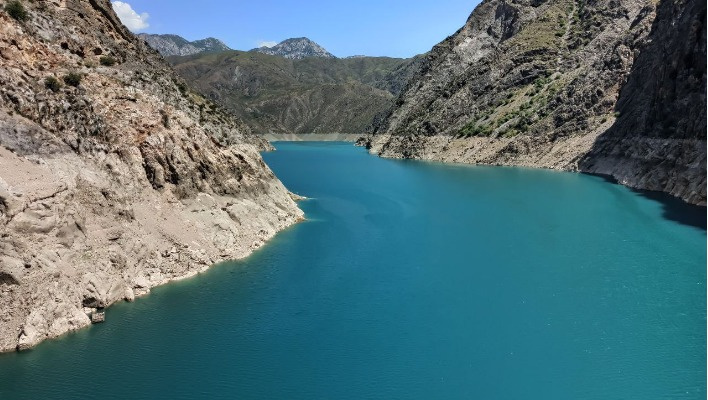In a statement delivered at the 46th Annual Meeting of the Association of Development Financing Institutions in Asia and the Pacific (ADFIAP) in Almaty, Kazakhstan, the Vice-Chairman of the Eurasian Development Bank (EDB)’s Management Board, Denis Ilin, revealed on May 165 that the EDB plans to invest US$8.4 billion in energy and water infrastructure by 2026.
“A total of 257 projects worth US$13.4 billion have been implemented in EDB member countries – Armenia, Belarus, Kazakhstan, Kyrgyzstan, Russia, and Tajikistan – and we’ll invest another US $8.4 billion by 2026,” Denis Ilin said, according to the EDB.
EDB experts reportedly project Central Asian countries to continue economic growth above the global average. By 2030, the region’s population is expected to increase by 17%, and food production is forecast to grow by 45%. “Rapid economic development will lead to a 10% increase in water consumption and a 34% surge in electricity demand,” Mr. Ilin added.
Water availability varies significantly among Central Asia’s nations. The upstream countries, Kyrgyzstan and Tajikistan, possess significant hydropower potential, with significant water surpluses, and generate over 90% of hydroelectric power. In contrast, the downstream countries of Kazakhstan, Turkmenistan, and Uzbekistan rely primarily on hydrocarbons for electricity generation. These countries depend critically on the seasonal regulation of river flow by their upstream counterparts.
“The demand for water can be met through the implementation of water-saving technologies, which have the potential to double water efficiency,” Denis Ilin commented. He also emphasized the need for coordinated action among the region’s countries to regulate river flow at hydropower plants. The seasonal water deficit could be reduced by 40%. “Our analysts estimate that the current arrangements in the water and energy complex result in a loss of approximately 1.5% of the region’s GDP,” he said.
According to Ilin, the EDB had approved a new strategy, identifying the Bank’s minimum investment in the Central Asian water and energy complex and projects to achieve the Sustainable Development Goals in water and renewable energy as well as the upgrade of thermal power plants to reduce their negative impact on the environment. The strategy envisions an investment of at least US $400 million in Central Asian countries by 2026.
In this regard, he mentioned significant long-term investment projects, such as Kambarata HPP 1 and the 100MW Kulanak HPP, which the EDB has already started financing. Denis Ilin also mentioned the project to convert Almaty combined heat and power (CHP) plant 3 from coal to gas and boost its capacity to 500MW, which will reduce power shortages in South Kazakhstan and significantly improve the environmental situation in Almaty. In addition, the Bank is considering projects to build solar and wind power plants in Kyrgyzstan and Tajikistan and will promote projects to modernize irrigation systems.
In conclusion, Denis Ilin shared his views on corporate ethics: “On the sidelines of the forum, journalists asked me whether other development banks are competitors for the EDB. They are not. This is a wrong approach. Quite the opposite, we need to coordinate the efforts of different banks and development institutions.”
The ADFIAP conference reportedly brought together more than 240 delegates and guests from more than 40 countries.




